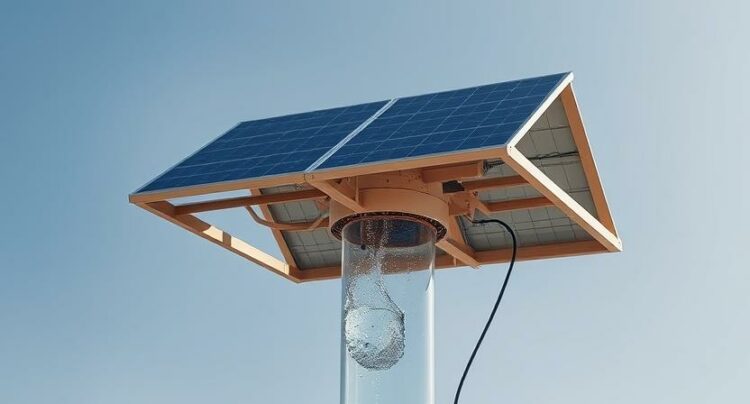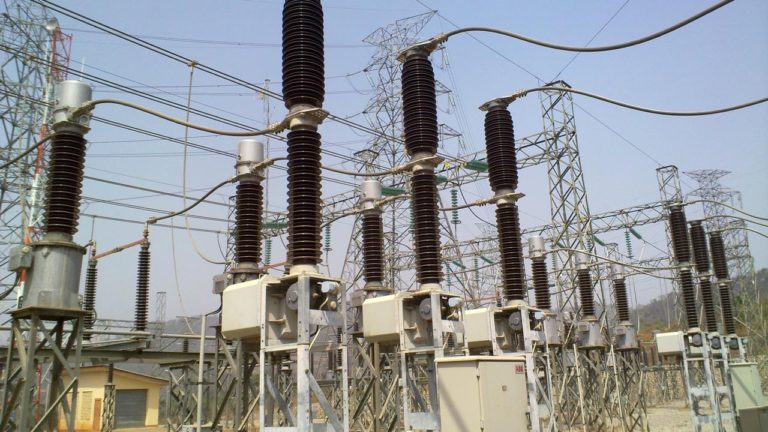Penny Herbst is the Strategy Director at Africa GreenCo. She is also a moderator of a session on financing renewable projects, during the Energy Revolution Africa conference session at the forthcoming African Utility Week and POWERGEN Africa in Cape Town in May. In this exclusive interview, she speaks on challenges of power finance. Excerpts
Eskom’s financial situation stresses the need for utilities to evolve into a new type of company. What is your view on this?
The current state of the Electricity Supply Industry (ESI) provides a perfect backdrop for many opinions on what has brought us to the quandary the industry currently finds itself in. As far as my opinions are concerned, they are my own and in this context, I would like to clarify that my comments on Eskom are based on a rather lengthy association as a former employee. And with insight in mind, I would like to highlight that Eskom does not operate in a vacuum and is but one part of the Electricity Supply Industry.
However, unfortunately for various reasons it is the most visible and we should recognise that, as such, it is the tip of the iceberg. As we all know, it was what was below the surface that sank the Titanic.
What is your take on the current financial position of Eskom?
Eskom’s financial position and therefore implicitly the country’s dire and the limited communication as to exactly how dismal a financial position the country finds itself in, as a result, is quite concerning! The focus thus far has mostly been limited to the controversy around load shedding (admittedly not an insignificant matter) and in this, attention has been diverted from the part of the crisis that is more complex to deal with. The real crisis, the financial one, is still lying in wait with its impact to be felt in the years to come.
To put the current size of the challenge in perspective, at the height of the large infrastructure build programme in the mid-1970s to 1990s, it is significant to note that at no time did Eskom’s net debt exceed ZAR 30 billion for a building programme in excess of 20 000+ GWs.
Eskom’s debt is now at an estimated ZAR 430 billion and climbing for a building programme of approximately 11,000 GWs that has yet to be completed and a further increase in debt is to be expected.
In addition to the pure Eskom debt, the contingent debt via the IPP programme should also be considered increase this to in excess of 600 billion.
Furthermore, the cost of maintenance and decommissioning costs of the aging plant will also add to the financial distress. The compounding effect of the cost associated with this debt that isn’t even partially being be serviced from revenues is significant. (Capital is being raised to service the debt.) The increasing debt burden is all the more concerning in the light of dwindling Eskom GWh sales figures.
Obviously, the context associated with this debt is important with Eskom’s inability to manage the costs associated with the completion of Medupi and Kusile at the forefront of the challenge. Moreover, the absolute value of the cost to completion of these 2 stations is more than just the overnight cost. It comprises of the costs to complete the original infrastructure and the cost to bring the capacity factors up to international norms (fix what needs to be fixed), also, the cost of Flue Gas Desulfurisation (it is uncertain if this has been included in the current estimates publically quoted of ZAR 32 billion to complete.), the capitalised interest associated with the not yet fully functioning asset, as well as the cost of forward exchange cover for all the foreign exchange debt which has been raised for these projects.
It is, therefore, concerning that the unbundling of Eskom is taking precedence in the solutions to address the crisis whilst ring-fencing and cost containment at the two plants that have largely contributed to the current crisis does not appear to be receiving as much attention in the communication to the public as it should.
Aside from the contribution from “state capture” the current financial position of Eskom has its roots in choices that were made without the necessary reflection and planning over a prolonged period of time. Just like the proverbial frog sitting in a pot of lukewarm water failed to recognise the heat was being turned up ESI stakeholders (not just Eskom) was slow to react to supply challenges and the changing business environment.
It is also most unfortunate that the need for new generation infrastructure came at a time where new technologies were starting to make their mark as part of the energy transition and Eskom reverted to what it thought it knew best – large infrastructure build without the necessary longer-term assessment of risk of this build and especially without an audit of the skill set required to implement and manage such large projects. In hindsight an EPC model, as opposed to an EPCM model, would have been a far more prudent approach to secure successful implementation – the context for this choice is also not going to be addressed here.
In defense of Eskom’s strategic vision, it is not to say that the energy transition was not foreseen.
Indeed, Eskom did establish a renewable energy business unit to drive the transformation. How this played itself out can also be a topic for another question and time. Suffice it to say that Eskom has one utility-scale renewable asset, the Sere Wind Farm outside of Vredendal and it is a pity that the success in its implementation is not being recognised or capitalised on. Neither are the lessons the organisation can learn from it. At the very least this asset could be used as a benchmark in its performance vs the private sector projects and lessons learned could be applied for the benefit of the industry.
And the new tariffs?
Although the tariff increase is painful, the country, consumers and the general public are going to have to absorb a lot of the same in the years to come. This will either come in the form of more above-inflation tariff hikes or further support from the fiscus, the most likely outcome being a combination of both. A point to note is that commentators in the energy space rather glibly talk about the government stepping in to support Eskom.
However, what most fail to grasp is that ultimately the government will seek its revenue from the public at large! This has implications for the country’s credit rating and cost of debt – an ever-increasing downward spiral. At the recent NERSA tariff hearings in Gauteng it was interesting to note that all but one of the presenters at the hearing were pushing their own agenda when they presented their arguments against the requested Eskom tariff increases.
One participant, for instance, mooted that consumers should not have to pay for the costs of the “developmental components associated with SOEs” but did not provide a solution as to whom and for that matter what the cost of this “solution” might be. The fact of the matter is that even though the IPP procurement programme the country is paying for the costs of the developmental state. Tariffs are set to rise no matter what the energy mix.
Moreover, it is also concerning that the ZAR 60 billion support from government is not being applied where it is needed most i.e., reducing the debt burden. Given the cost of debt, this should be of prime concern.
At the lead-in, to this discussion, I mentioned the iceberg and the large part that is not visible to those that were captaining the Titanic. Unless the powers that be reflected in the Electricity Supply Industry as a whole, the long-term sustainability of the industry will be compromised with ultimate consequences for the country and its people.
What is largely neglected in the space of apportioning blame is the fact that any new build (here I mean any technology) will come at an elevated price to that of the current tariff. I am repeating myself here but this message needs to be communicated such that unreasonable expectations of the cost of any new build are not created.
In making the point on tariffs one cannot avoid a discussion on the cost of energy to those whose only access is to off-grid sources. While there is a lot of innovation in this space, the cost of these services does not come at a discount to the more traditional grid-tied sources. Here a lot more attention needs to be paid to the sustainability of pricing models to ensure that limited concessional funds are being employed in a manner that brings down the cost to those communities but more importantly also addresses the extent/nature of the access.
There are far too many off-grid operations which focus on a few lights, a telephone charging connection and an entertainment device (TV / Radio). Models for access to energy access need to be far more aspirational and absolutely need to address refrigeration and cooking (and here I am not talking about cook stoves!). We use the word “leapfrogging” in the context of technology energy access in Africa but if we are honest this is not being achieved in the true sense of the word.
Regarding tariffs of renewables, in general, I believe that access to finance to assist in the fight against climate change has not been delivered when it comes to bringing down the cost. There needs to be a greater focus on this aspect, fragmentation of the procurement process has been a deterrent in leveraging this potential.
How is this currently affecting the prospective investor’s view of the industry and its future?
Honestly, I think the business model for energy investment needs to change. There are far too many players that are comfortable with the same structures for investment, selling to an SOE with a government guarantee. What we really need at present is for investors to have a stake where their influence contributes to improving the ESI as a whole. Both current investors familiar with the South African environment and those that wish to enter the market for the first time are awaiting the release of the revised IRP for their next move.
What kind of project would you advise an energy investor to consider at the moment?
Energy investors need to reconsider their business models especially as it pertains to their ability to take on more risk. From the lessons learned in South and Southern Africa it is clear that international investors are far more aligned to the old style of implementing power projects – build, ring-fenced and sell to an SOE on a long-term basis. Innovative new business models and an ability to move away from the traditional PPA package which is supported by government guarantees are yet to be tested and the ESI with all its constituent components largely contributes to this. The constant refrain regarding allocating risks to those that can best manage them leaves a large number of residual risks that by default fall to the traditional off-taker – SOE/Government).
However, one cannot continuously hammer on the challenges, regulatory environment, cost-reflective tariffs, etc. It is incumbent on all players to address the sustainability of the ESI and in this new risk allocation and mitigation, structures need to be tested even if it is done so on a small scale such that the ESI transitions as it proves them.
For instance, I would like to use the opportunity to mention an innovative business model, Africa GreenCo – a creditworthy off-taker and aggregator of renewable energy supply. GreenCo will function as an intermediary buyer and seller of power from IPPs and in this role will aggregate financial and supply risks in a portfolio approach by, amongst others, using local and regional markets to transparently diversify its risks. The structure recognises the need for operating models that align with new technology and where the risks of the sector might be better managed by being structurally embedded in the market as opposed to an arm’s length pure financial relationship.
Significant value is to be had by including new business models as part of the energy revolution where players have an inherent interest in the industry’s long term success. GreenCo is an example of one such model that could contribute to the transformation of the energy market. New approaches and innovation is badly needed at this stage of renewable market development.
What is the reality of the costs of electricity?
The reality is that the cost of electricity is set to continue on an increasing path for some time to come and this is not just because of the Eskom crisis, it relates to the lack of investment in the sector over a prolonged period of time without the necessary framework for providing for the cost of the infrastructure – a savings for the future culture. The last substantial infrastructure build programme (1970-1980s) was rolled out at a time when the USD/ZAR exchange rate was at par and a large part of the foreign exchange risk was covered with the support of the South African Reserve Bank (i.e., support via the fiscus). In addition, a Capital Redemption Fund purposefully included in the tariff mechanism provided some cushion by limiting the accumulation of debt via contributions to the capital cost of the new build.
The electricity cost debate at this stage is somewhat clouded with a constant reference to the marked downward movement of the cost curve associated with renewable generation over the past decade.
This is made without recognition that the economic parameters associated with any new build are markedly different to the build of a few decades ago. In addition, the assumptions contained in the models associated with the price reduction are not fully transparent and understood.
A transaction of USD 2c / kWh in the UAE cannot be compared to a similar project in the SSA region and more significantly so neither can the tariff. Factors such as complementarily access to sources to supplement intermittent power and the cost of debt have to be understood.
Therefore, the intermittent nature of renewable generation means that its incorporation in the energy mix has to go hand in hand with investment in sources of supply that complement it. At this stage, the costs of these complementary resources and their impact on the tariff have not been fully assessed.
Being responsible for the country’s energy planning is not a simple task and the DoE, the Ministry responsible for security of supply, will need to take cognisance of the many agendas in the ESI and transparently assess and cost the new energy future as it pertains to the energy mix, timing of new build, tariffs, etc. with a great deal of care. This task is largely the focus of the IRP and its delivery is being subjected to a number of widely divergent energy players and their agendas. Assumptions in the costing of the mix should be carefully considered for their impacts on the tariff. The DoE has an unenviable but significant task which is not to be taken lightly.
Furthermore, the IRP cannot be cast in stone. The energy transition is far too dynamic to lock the country into a defined plan with no flexibility to amend over an extended period of time. The advent of new technologies brings with it shorter lead times for development and implementation and the plan should leverage this. The apportioning of risk to ensure that all stakeholders are to some extent responsible/accountable for its success has to be considered as part of the implementation.
Finally, as it pertains to impact, any new build procurement programme also needs will need to incorporate lessons learned and improve risk allocation and pricing structures associated with its implementation. It should be subject to a greater level of oversight given the implications for the economy at large, including recognition of which entity will be responsible for the security of supply. This is not clear in the current planning.
What is your take on Corporate PPAs? Are they being implemented and are they working?
The Corporate PPA discussion is being driven by a few factors, amongst others; i) it the need for energy security, ii) the cost of renewables being lower than the new large utility-scale build associated with thermal sources, iii) the ease of implementation of, largely PV, and iv) learnings from the implementation of renewable projects with the SOEs as the off-taker.
At this stage, however, it is unfortunate that the majority of these Corporate PPA transactions appear to be focusing on PV with capacity factors of between 25 percent – 35 percent where costs (and therefore tariff) have come down to competitive levels. What should be noted however is that until storage solutions reach similar competitive levels, the industry will still rely on Eskom for the balance of supply? In this scenario, there has to be a relook at the tariff structures associated with Eskom’s current business model for its impacts on financial sustainability.
Pricing signals for the energy mix and security of supply are significantly lagging market developments. A reduction of Eskom sales will be accompanied with further upward pressure on tariffs and/or support from the government.
Eskom or its successor will be saddled with the debt which, by the way, implicitly includes any other new build whether it is executed by Eskom or a DoE drove IPP programme. Just because private builds do not mean that it doesn’t have to be paid for and the messaging around this fact is less than transparent.
Therefore a more transparent mechanism for establishing the acceptance of the way forward by all ESI participants has to be found, the IRP process does not provide sufficiently for this.
Here I am not saying that Corporate PPAs are not part of the solution I just think there are consequences for the ESI, and here this including consumers. The impact has to be managed and measured. The impact on Eskom sales could cause tariff hikes far above those already contemplated and that a plan needs to be in place to attend to these impacts. Here the Department of Energy has taken on the planning role which makes the Integrated Resource Plan an extremely important document which should not only be scrutinised by generation participants but more so the broader consumer base for its impact on pricing and tariff.
How is the current regulatory framework for energy impacting municipalities in terms of energy independence and financial stability?
For me, the bigger question here is the impact on consumers given the municipality business model of relying on revenues from electricity sales to generate revenue.
At present NERSA is going through a process of negotiation with the municipalities for their tariff increases to be implemented in July however this process is not subject to public consultation. The reason being put forward for this is that there was not sufficient interest from the public as to the extent of these increases. This I find very strange and it goes to my comment on Eskom being the tip of the iceberg – the municipalities are as much a part of the ESI as Eskom and as a matter of fact, in most large metros they add a margin in excess of 100 percent to Eskom’s tariff e.g. Eskom charges the municipalities approximately ZAR 1 / Wh and they in turn charge ZAR 2+ / kWh to their customers. This is exorbitant and to make matters worse the charges associated with pre-paid exceed those of postpaid. Surely pre-paid customers are a better credit quality than those that are being billed in arrears. The question to be raised here is who is benefitting from pre-paid meters, if it is the private sector, is their remuneration commensurate with their risk?
The advent of distributed generation (especially that behind the meter) will impact on the municipality revenue streams and one thing is for certain they will address this with an alternate collection model. This is concerning and it would seem the general public is not focusing on the impact of new business models in the ESI and how it will impact them.
For instance, you may have a solar home system installed but remain connected to the grid for backup. In the scenario, the potential for large charges for standby capacity to address these backup may render the cost of the home system hugely costly. It is not clear how the regulatory framework will address this.
Actually, the regulatory environment is significantly lagging the technology developments and new business models associated with the energy transition.
Are renewables making a difference yet? If not, why?
Yes, renewables are making a difference, however, what is not being fully appreciated is that the full solution, from a cost perspective, for a fully renewable future has not yet been found. So, as we transition to this new energy future this space will be subject to a significant amount of noise fed by a number of agendas and the key to a successful transition will be discerning and segregating this noise into its constituent components to ensure that the impact is addressed for both risk and cost to the consumer.
What we seem to be missing in the region is recognition for the complementarity of renewable resources across the region and how this complementarity might assist in bringing down the costs of renewables and their profile as an intermittent source. Issues like the security of supply and reserve margins need to be addressed by the region as a collective as in attempting to embrace renewables we are missing part of the solution. A more comprehensive discussion on battery storage (and other sources of storage) and its incorporation in the energy mix is also long overdue, however, the cost of early adoption as per Rounds 1 and 2 of the IRP are to be noted as a lesson learned.
How can mini-grids make a difference?
I don’t profess to be a specialist on mini-grids but with reference to my response on tariffs in Question 2, I have yet to come across a sustainable mini-grid solution that is affordable. By affordable, it includes cost compatibility with grid-connected power. Where concessional and/or grant facilities are being used to implement mini-grids they should clearly demonstrate how they are being used to bring down the cost for those that are less financially resourced as opposed to boosting returns.
Anything else you would like to add?
Yes, when you approached me for a contribution for African Utility Week and POWERGEN Africa, I could not help but recall a report published in 2014 called “Energy Darwinism” by Citibank which highlighted technology development and substitution between technologies over time.
In analysing the implications for utilities, it highlighted the need for utilities to “face a choice of evolving themselves within the new energy framework, or gradually regressing to become effectively state-funded”. I can’t help but reflect on how deeply relevant this statement is in the context in the South African context. It is indeed unfortunate that Eskom (perhaps not all to be placed at Eskom’s door) has failed to capitalise on the transformation which is happening in the electricity supply industry and has, in the process, commenced of a journey of regression, requiring government guarantees for its funding programme.
Eskom support and the resultant argument for government guarantees in support of IPP generation are not sustainable in the long term. So as mentioned earlier solutions need to be found which involve a more embedded interest in ensuring the sustainability of the industry such that all stakeholders have a stake across the ESI value chain.
However, the analysis in this report suggests that this change also brings opportunities and highlights that traditional utilities, with little experience of business model innovation, will face intense competition from other industries and that available returns are unlikely to match those historically delivered by conventional generation.
It stressed the need for utilities to evolve into a new type of company, with options dictated by positioning within the value chain, whether this be upstream, midstream, or downstream. The report suggested that the share of generation per technology grouping could potentially split by distributed resources – solar, wind etc. (eventually 30 per cent to 40 percent of demand); renewables as a portion of centralised demand (30 percent to 40 percent of demand); and conventional generation – nuclear, coal, CCGTs (30 percent to 40 percent of demand).
Whatever the breakdown, it is relevant to note that the report highlights that the energy environment in 2025 to 2030 will most probably look revolutionary versus that of the beginning of the century. The big question is whether or not South and Southern Africa will successfully navigate the dynamically changing environment to the benefit of its local population.
I would also like to highlight another insightful publication of 2014: The US Solar note published by Bloomberg New Energy Finance in May 2014 focuses on how utilities in the United States are coping with distributed PV (dPV) and highlights that, barring regulatory limits, dPV has significant potential for growth driven by falling system prices and other reductions in cost; rising electricity rates; and expanding public awareness of the technology.
The response from utilities to this challenge to their rate base indicates that three main strategies have emerged:
Fight: Certain utilities have chosen to fight the encroaching of their space by motivating changes to the regulatory environment by changes to rate structure and net metering caps, etc.
Flight: Some have taken no action and chosen to ignore the threat of dPV and do not plan to change their business model.
Adapt: Others have acknowledged the opportunity for growth of this business and, through their regulated or unregulated arm, have strategically positioned themselves to benefit from the opportunity.
In some cases, and this could explain the entry into the South African market by foreign utilities through the REIPPP programme, some utilities have chosen to fight in their home market and participate (adapt) outside of their service territory via their unregulated arm.
Eskom did have a strategy it was just not implemented – this is a discussion for another time? What is evident is that there is so much potential for homegrown solutions that are not receiving enough thought and planning. This solution could conceivably include a role for Eskom such that the cost impacts of the new generation are ameliorated for the consumer at large. The immediate past is not necessarily a reflection of the future especially if excellent leadership and management skills are procured. There should be a balance in transformation.
What is clear though is that there is a myriad of players lying in wait to capitalise on the gap that has been created by the unfolding Eskom financial and reliability challenge. Can we as a country honestly say that the planning and pricing impact for this has been fully comprehended? As I have alluded to in 6. above a mechanism for interrogating energy planning needs to factor in the agendas of ESI market participants and it has to include a rethink on risk allocation. If we continue down the path of providing government guarantees to energy suppliers the need for adequate due diligence as to the sustainability of the tariff will not receive adequate attention. The country at large should be given the opportunity to interrogate and agree on the alternatives as a collective. At present, the planning is far too fragmented to allow for a transparent process. The country needs to be significantly engaged as to the alternatives. Are we?
You have been in the energy industry for over 30 years, many of these in a utility environment, do you have a view about the contribution that women have made/are making to the energy industry on the continent?
Based on my experience at Eskom, women have been making a contribution in the utility environment across various disciplines for quite some time and I think it has got to a point, especially from the utility’s point for the view that it is not so much of an issue anymore. I am not sure I can say as much for the private sector especially as it pertains to my across-discipline remark but I stand to be corrected.
However, from a visibility point of view, it still seems to be a man’s world. I would like to qualify this statement in one respect, I see far more women being entrepreneurial in the energy space and starting businesses as opposed to there being a real visible change in the energy corporate / IPP space. Progress has to include mechanisms to measure and monitor sustainability and further define what exactly is meant by gender parity and remuneration thereof. Regarding my remark re the private sector, perhaps I will be proved wrong and I hope so – let’s see what the mix is like at African Utility Week and POWERGEN Africa!
One final remark?
There are two key issues you have not asked for my comment and I am not an expert on either. They are, however, key, as we take on a more significant part of the journey of transition. Both, i) Just Energy Transition and ii) Youth require an extensive engagement. Decisions taken in respect of the IRP and its implementation regarding these two critical aspects require a collaborative effort to ensure that they are adequately addressed.









Telegram应用是开源的,Telegram官网下载 https://www.telegramv.net 的程序支持可重现的构建。Telegram同时适用于以下环境:Android安卓端,iPhone 和 iPad及MacOS的Apple端,Windows/Mac/Linux桌面版
https://www.telqq.com Telegram群组,Telegram群组导航。收录Telegram上的优质频道和群组,打造一个高质量Telegram导航。TGNAV收录整理了Telegram上的许多优质频道、群组、机器人,帮助用户发现更多优质的群组。
https://www.tellern.com Telegram应用是开源的,Telegram下载的程序支持可重现的构建。Telegram同时适用于以下环境:Android安卓端,iPhone 和 iPad及MacOS的Apple端,Windows/Mac/Linux桌面版
I was able to find good advice from your blog articles.
Also visit my web-site the growth matrix sponge
在这里下载Telegram官网最新版,适用于所有主流操作系统。本站为你提供详细的纸飞机使用指南,包括如何下载、安装以及设置中文界面,帮助你轻松使用这一全球领先的通讯 https://www.telegrambbs.com